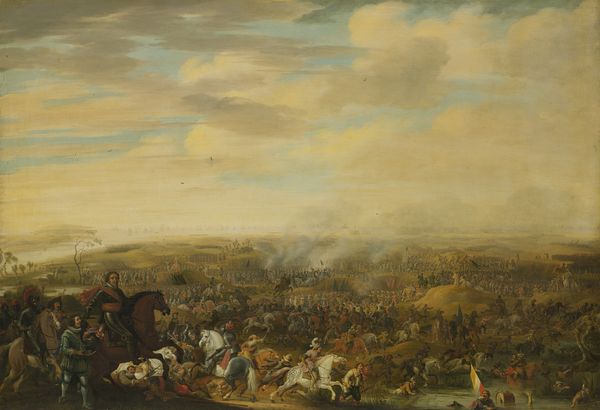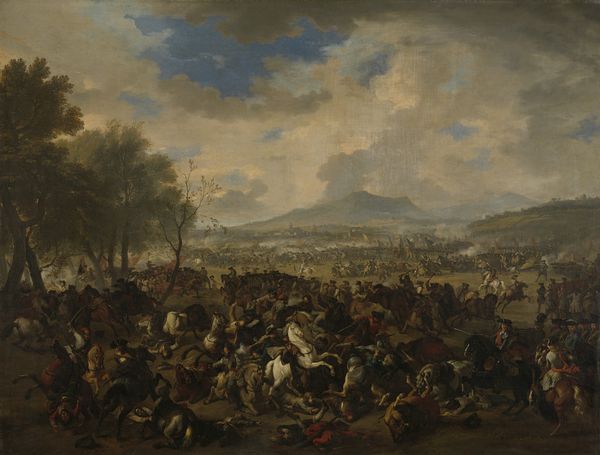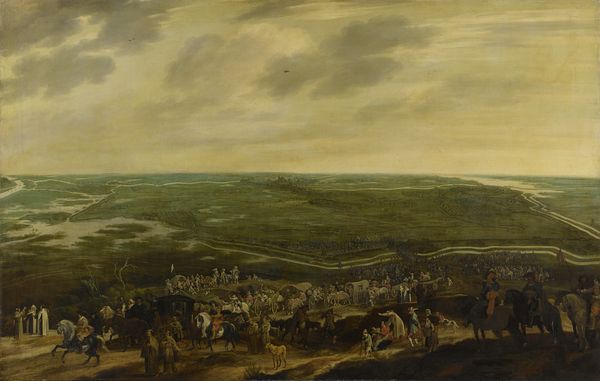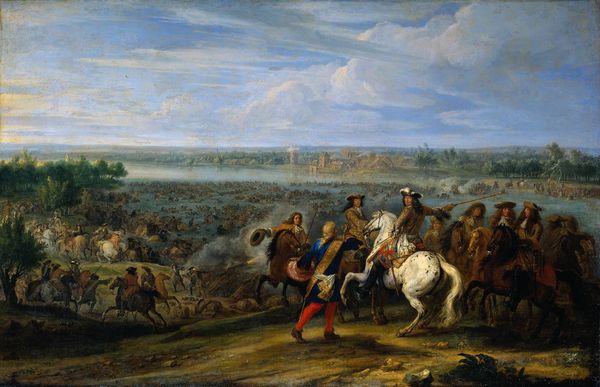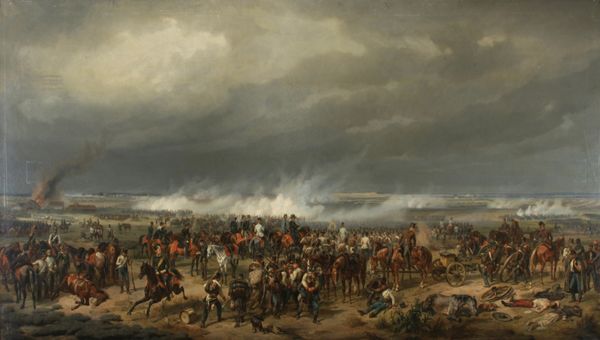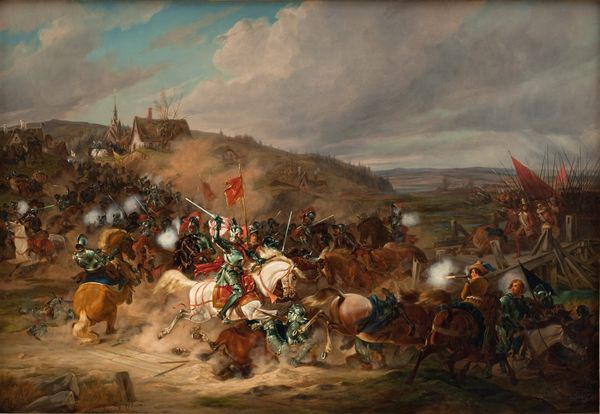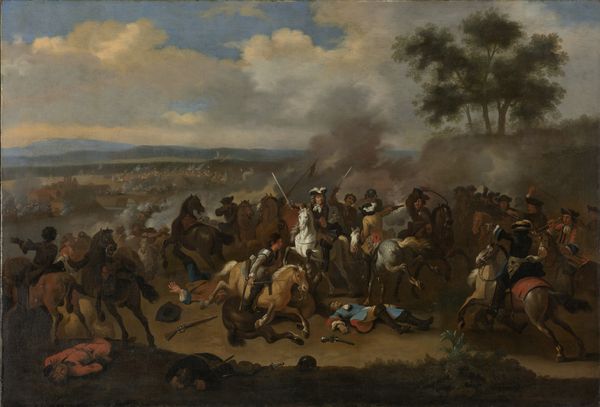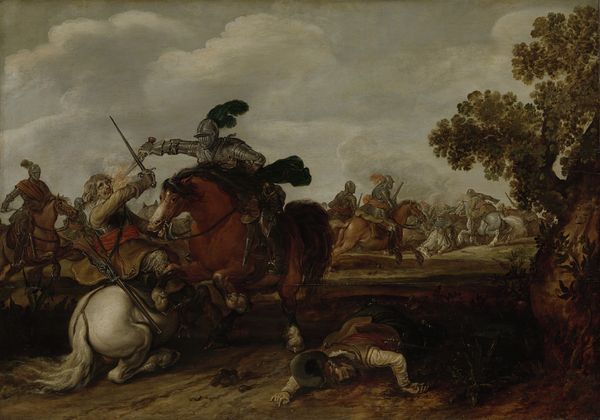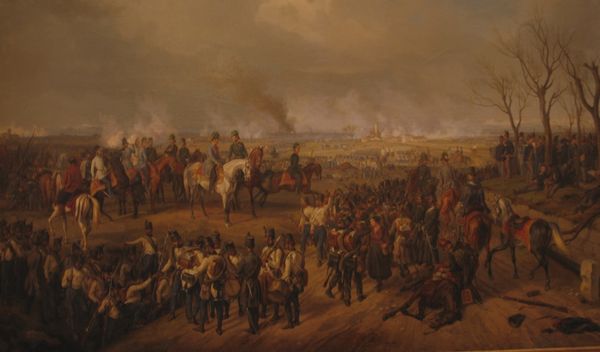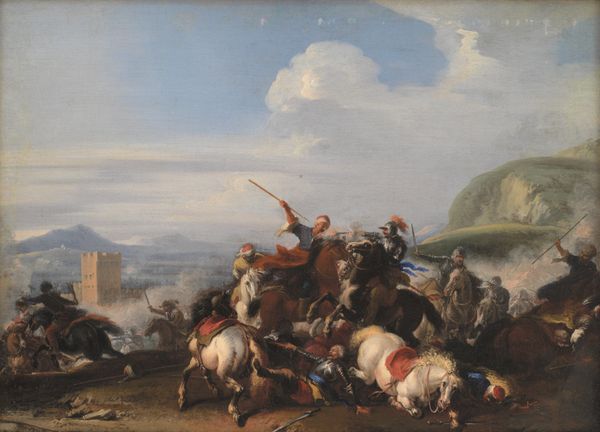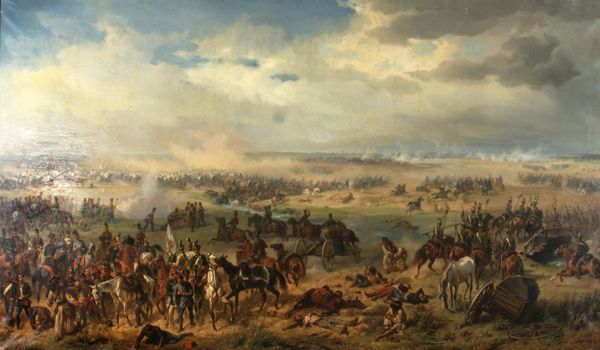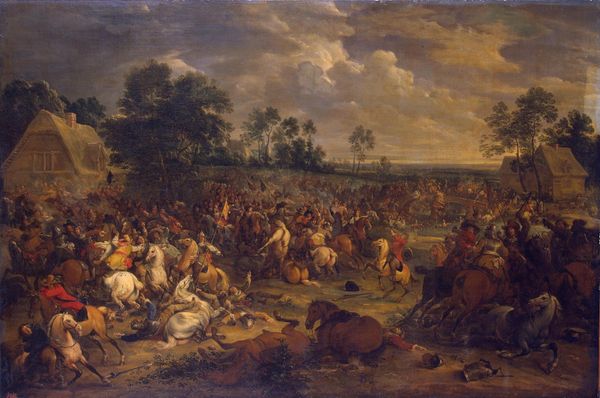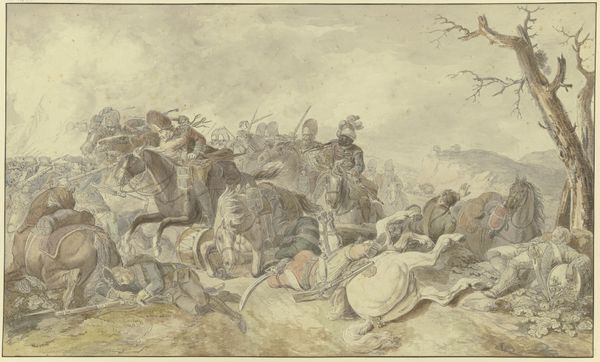
The Skirmish Between Cuirassiers, 5 February 1600, on the Vughterheide c. 1635
0:00
0:00
painting, oil-paint
#
narrative-art
#
baroque
#
painting
#
oil-paint
#
landscape
#
figuration
#
oil painting
#
cityscape
#
genre-painting
#
history-painting
#
realism
Dimensions: support height 72 cm, support width 106 cm, frame height 91.7 cm, frame width 126 cm, frame depth 9.6 cm
Copyright: Rijks Museum: Open Domain
Curator: Vrancx painted “The Skirmish Between Cuirassiers, 5 February 1600, on the Vughterheide” around 1635. You can find this genre and history scene here at the Rijksmuseum. Editor: Wow, absolute chaos. Like looking into a turbulent dream. Curator: Vrancx’s Baroque sensibilities offer us more than just action. I notice a tension between the chaotic melee in the foreground and the composed serenity of the distant city and windmills. A silent Dutch witness to the theater of war. Editor: Indeed. And notice how the dynamism of the battle spills across the earth-toned foreground while a very specific spatial relationship anchors to a political and economic perspective in the backdrop. It's the reality of war versus the daily workings of a culture at odds. It forces us to reconcile brutality with civilization, as the Dutch navigated war and a burgeoning golden age. Curator: You know, for a piece filled with violence, there’s an elegance. Look at the rendering of light on the horses, the detail in the soldiers’ armor. Almost a choreography to the clash, a gruesome ballet. Do you get that at all, or am I just lost in painterly adoration? Editor: I see what you mean. Even though we understand that war means bloodshed and senselessness, it does seem romanticized here, where these violent acts performed by men on horseback are turned into symbols of conquest and power—concepts, even if romanticized, steeped in very real systemic issues. It speaks to the long relationship between conflict and artistic creation and forces us to investigate whether the real aim here is to inspire valor or merely to create a sort of visual report of events of the time? Curator: Or perhaps the work does not attempt to choose a side but rather reflect on war as one component within a tapestry of early modern life. The landscape absorbs the conflict as readily as it cradles that far off city. Editor: Ultimately, art provides opportunities to reflect on that brutality while also understanding its reverberations through a broader history.
Comments
No comments
Be the first to comment and join the conversation on the ultimate creative platform.
